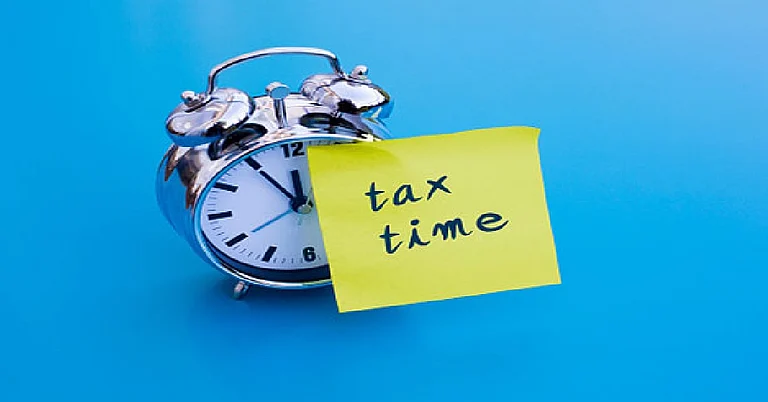Making a choice between the old and new tax regimes is an important step for Indian taxpayers. This is even more crucial following the recent changes announced in the Union Budget 2025. The government, since the financial year 2023-34, has made the new tax regime (NTR) the default regime. This means that unless taxpayers specifically opt (or have opted) for the old tax regime (OTR), their taxes will be calculated based on the new system.
Income Tax: Can You Switch Tax Regimes Every Year?
While salaried individuals enjoy the flexibility to switch tax regimes annually, those with business or professional income face stricter rules. The recent changes announced in Budget 2025 have further extended the benefits under NTR, making it a more compelling option for many taxpayers
However, one crucial element of tax planning is knowing when and how you can switch between both regimes as per your changing financial needs. Let’s understand in detail the key things you should know regarding switching between the old and new tax regimes.
Flexibility for Salaried Taxpayers
Those who earn income from salaries, interest, or rent, collectively known as non-business income - have considerable flexibility. These taxpayers can switch between the new and old tax regimes each year.
For instance, if you chose the NTR last year, you have the option to revert to the old regime this financial year (FY25). The condition? You must make this decision before the Income Tax Returns (ITR) filing deadline, which is July 31, 2025.
Also, the option to change to the old tax regime (OTR) is available only if the return is filed on time.
What About Business owners?
The rules are more stringent for taxpayers who earn income from business or other professional activities. Once they opt for the NTR, they cannot switch back and forth so freely.
If they decide to revert to the OTR after choosing the new regime, they have only one opportunity to return to the NTR. Such restrictions require careful consideration when making the initial choice.
How To Switch Between OTR and NTR?
Suppose while filing ITR for FY 2024-25 (AY 2025-26), you want to opt for the old tax regime instead of the default new tax regime. Here’s what you will need to do;
The first step is to submit the Form 10-IEA before filing the ITR.
What is Form 10-IEA? It is a declaration made by the return filers for choosing the ‘Opting Out of New Tax Regime’. This form serves as an official declaration of their choice.
Who needs to submit it? Individuals, Hindu Undivided Families (HUFs), AOP (Association of Persons - not being co-operative societies), BOI (Body of Individuals) or Artificial Juridical Persons with business or professional income need to submit Form 10-IEA if they wish to pay income tax as per the old tax regime.
On the other hand, salaried individuals and those with non-business income can switch between regimes annually.
On the other hand, taxpayers who do not have income from business or profession can simply tick the “Opting out of new regime” in the ITR form without the need to file Form 10-IEA. It is important to remember, that you can make this choice as long as you’re making your decision before the ITR filing deadline under Section 139(1) of the Income Tax Act.
Simply put, only those who file ITR-3, ITR-4 or ITR-5 have to submit Form 10-IEA if they have business income (other than coop societies). Individuals and HUFs filing their returns in Forms ITR-1 or 2 are not required to submit Form 10-IEA.
Key Deadlines for ITR 2025
It is equally as important to know the key deadlines when it comes to filing your income tax returns. For taxpayers not requiring an audit, the ITR filing deadline is July 31, 2025, for the FY 2024-25 (assessment year 2025-26).
A belated return can be filed until December 31, 2025, but note that this comes with a ‘late fee’. If you realise after filing that you should have chosen a different tax regime, you can submit a revised return, but only if the original ITR was filed on time.
Recent Changes Announced in Union Budget 2025
The Budget 2025 came with a big relief for middle-class taxpayers. Finance Minister Nirmala Sitharaman announced two key changes in the Budget that you must know or revisit before filing your ITRs.
Revised Slabs (under NTR)
The government has revised the tax slab rates under the new tax regime as follows -
Revised Slabs:
Up to Rs 4 lakh: Nil
Rs 4-8 lakh: 5 per cent
Rs 8-12 lakh: 10 per cent
Rs 12-16 lakh: 15 per cent
Rs 16-20 lakh: 20 per cent
Rs 20- 24 lakh: 25 per cent
Above Rs 24 lakh: 30 per cent
Increase In Exemption Limit:
Budget 2025 also increased the tax exemption threshold for annual incomes up to Rs 12 lakh, up from the previous Rs 7 lakh. This change is expected to benefit the middle-class by increasing their household savings and consumption.
Here a taxpayer who has opted for NTR will not be required to pay any tax on any income up to Rs 12 lakh per annum, excluding special rate income by way of Rebate of Rs 60,000 under 87A.
These changes have been brought into action to simplify the tax structure and provide some relief to the middle-class taxpayers of India.
While salaried individuals enjoy the flexibility to switch tax regimes annually, those with business or professional income face stricter rules. The recent changes announced in Budget 2025 have further extended the benefits under NTR, making it a more compelling option for many taxpayers.


